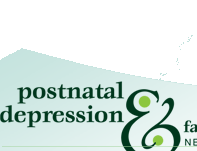 |
 |

|
|
|

CARBAMAZEPINEThis section is designed to inform professionals.(Consumers, see Fact Sheet on Carbamazepine) Available as Tegretol. Carbamazepine is an anticonvulsant which is also a mood stabiliser, used in the treatment of Bipolar Affective Disorder. Use in PregnancyCategory D
Use in LactationCategory L2
ConclusionsIn light of the above mentioned risks:
References(1). Kimberly A Yonkers, Katherine L Wisner, Zachary Stowe, Ellen Leibenluft, et al. (2004) Management of Bipolar Disorder during Pregnancy and the Postpartum Period. The American Journal of Psychiatry., 161 (4): 608-13 (2). Licht RW, Vestergaard P, Kessing LV, Larsen JK, Thomsen PH. (2003). Psychopharmacological treatment with lithium and antiepileptic drugs: suggested guidelines from the Danish Psychiatric Association and the Child and Adolescent Psychiatric Association in Denmark. Acta Psychiatr Scand, 108 (Suppl. 419): 1–22 (3). Gideon Koren , M.D., Anne Pastuszak , M.SC, and Shinya Ito , M.D. (1998) Drugs in Pregnancy. The New England Journal of Medicine: Review Article: Volume 338 Number 16 1129- 1137. (4). Morrow, J., Russell, A., Guthrie, E., et al. (2006) Malformation risks of antiepileptic drugs in pregnancy: a prospective study from the UK Epilepsy and Pregnancy Register. Journal of Neurology, Neurosurgery and Psychiatry, 77, 193–198. (5). Altshuler, L. L., Cohen, L., Szuba, M. P., et al. (1996) Pharmacologic management of psychiatric illness during pregnancy: dilemmas and guidelines. The American Journal of Psychiatry, 153, 592–606. (6). Matalon, S., Schechtman, S., Goldzweig, G., et al. (2002) The teratogenic effect of carbamazepine: a meta-analysis of 1255 exposures. Reproductive Toxicology, 16: 9–17. (7). Bar-Oz, B., Nulman, I., Koren, G., et al. (2000) Anticonvulsants and breast feeding: a critical review. Paediatric Drugs, 2, 113–126. (8). Cohen, L. S., Sichel, D. A., Robertson, L. M., et al. (1995) Postpartum prophylaxis for women with bipolar disorder. The American Journal of Psychiatry, 152, 1641–1645. (9). Holmes, L. B., Harvey, E. A., Coull, B. A., et al. (2001) The teratogenicity of anticonvulsant drugs. The New England Journal of Medicine, 344, 1132–1138. (10). Lumley, J., Watson, L., Watson, M., et al. (2001) Periconceptional supplementation with folate and/or multivitamins for preventing neural tube defects. Cochrane Database of Systematic Reviews, 2. (11). Artama, M., Auvinen, A., Raudaskoski, T. et al. (2005) Antiepileptic drug use of women with epilepsy and congenital malformations in offspring. Neurology, 64, 1874–1878. (12)Adab, N., Tudur, Smith C., Vinten, J., et al. (2004a) Common antiepileptic drugs in pregnancy in women with epilepsy. Cochrane Database of Systematic Reviews, 3. Art No: DOI: 10.1002/14651858.CD004848
|
||||||||||||||
Home | About us | Baby | Books & Links | Contact Us | Culture | Fact Sheets | Family/Whanau | Fathers | Glossary | Medical Info | Medications | Post Natal Depression | Pregnancy | Q&A | Related Conditions | Stories | Support | Treatments |

